Light Schedule for Reef Tank: Optimize Coral Growth
When we think about optimizing coral growth in our reef tanks, the light schedule plays an essential role. We need to take into account factors like intensity, duration, and the natural lighting patterns that corals would experience in their natural habitat. By gradually adjusting the light throughout the day and incorporating moonlight phases, we can mimic these natural conditions.
But how do we determine the optimal light schedule tailored specifically to our corals’ needs? And what tools can we use to achieve this? Let’s explore these questions and uncover the strategies that can make our corals thrive.
Key Takeaways
- Gradually ramp up and ramp down light intensity to mimic natural sunrise and sunset.
- Use a PAR meter to measure and adjust light intensity tailored to coral needs.
- Implement a high noon period with peak blue spectrum light for effective photosynthesis.
- Utilize programmable LEDs to customize and automate natural daylight cycles.
- Regularly adjust the light schedule based on coral growth and health feedback.
Understanding the Importance of Light in a Reef Tank
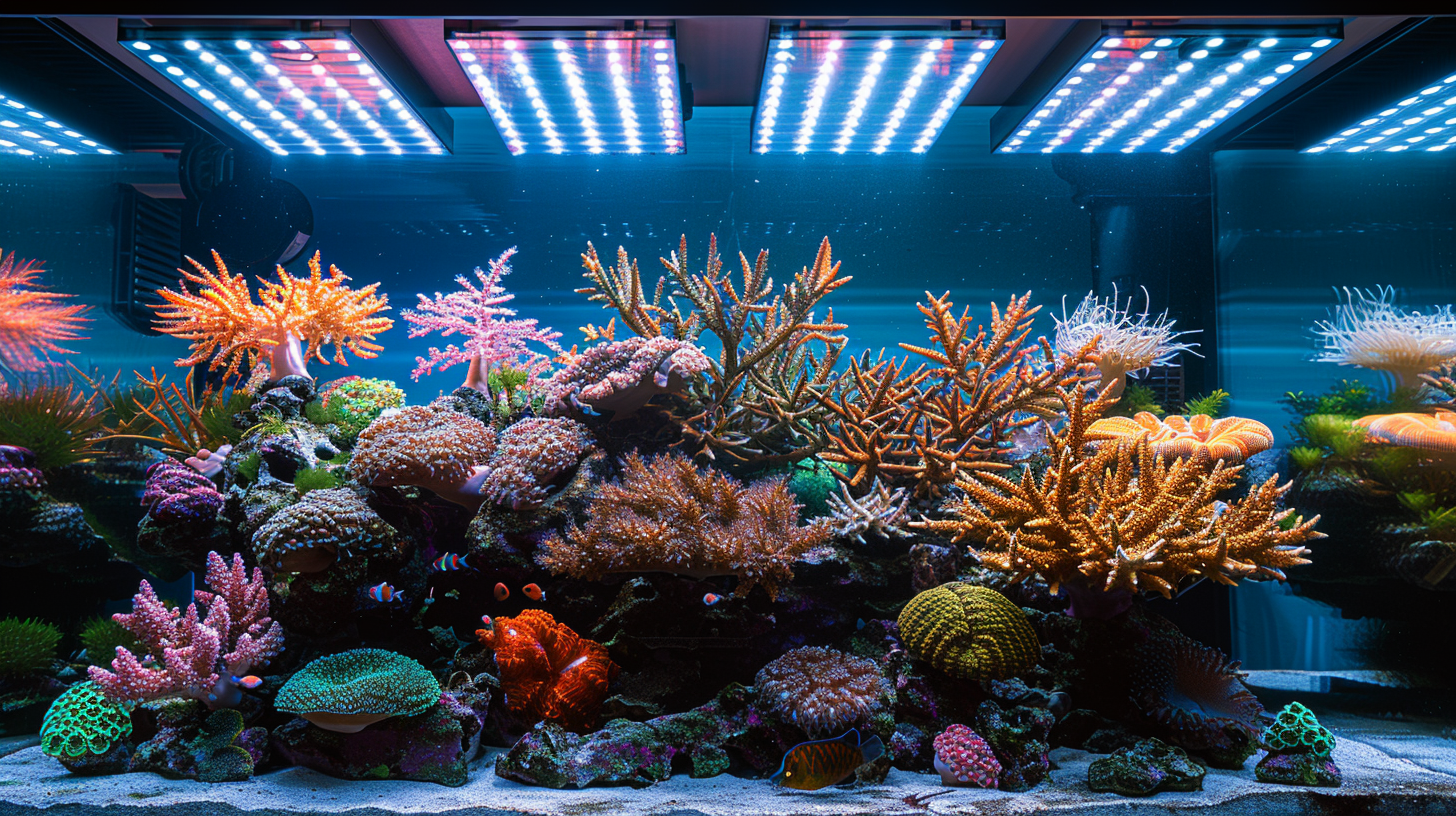
Light is not merely about illumination; it’s the engine behind photosynthesis, the process that allows corals to thrive and maintain their vibrant colors. In a reef tank, ensuring the light spectrum mimics natural sunlight as closely as possible is crucial. This involves a balance of blue and white light.
Blue light, penetrating deeper into the water, aids in effective photosynthesis. Without it, coral growth can stagnate, resulting in a dull aquarium. Proper lighting also involves managing the intensity and duration to prevent issues like bleaching from too much light or stunted growth from too little.
Decoding the Ideal Light Schedule for Reef Tanks
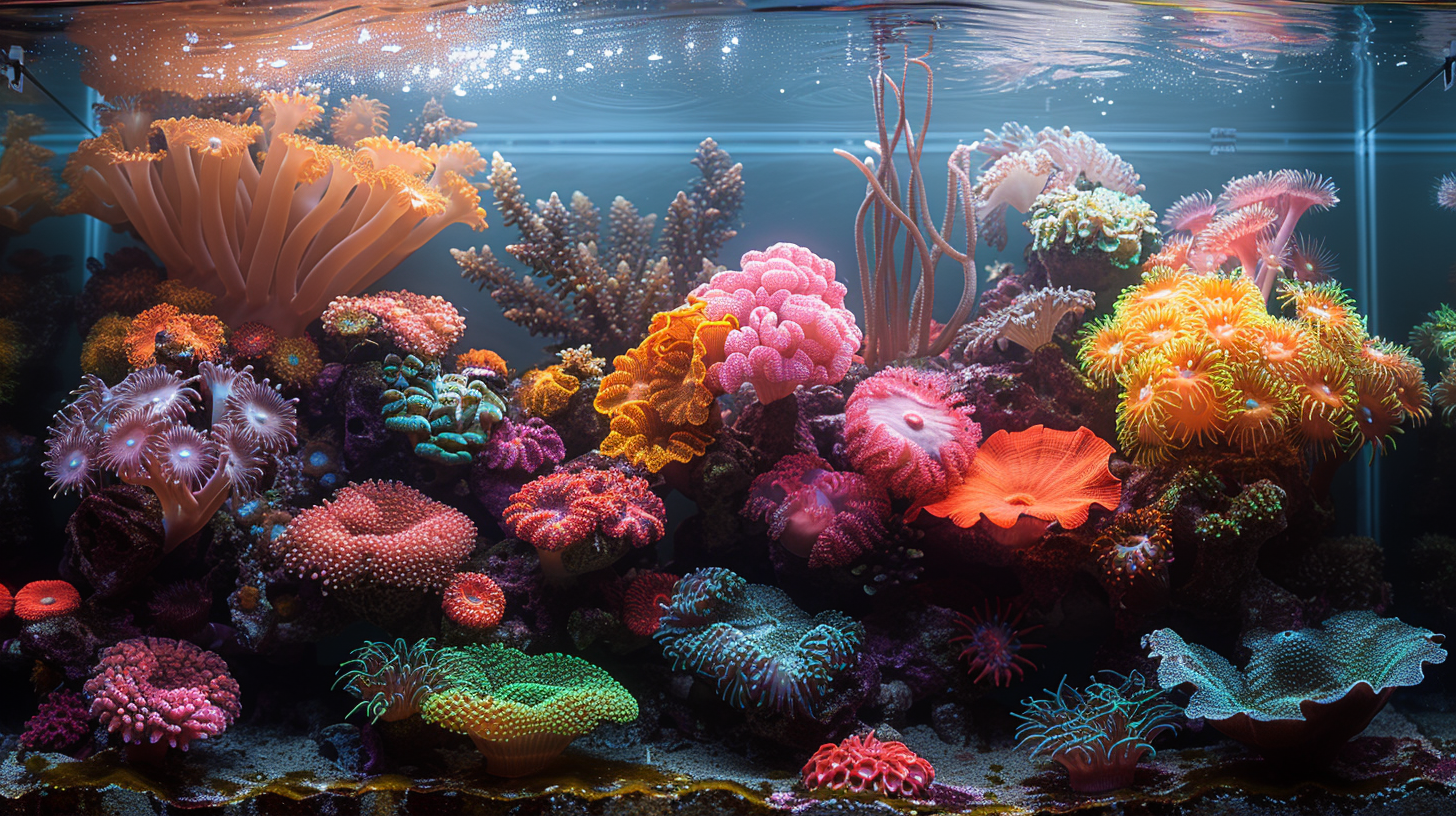
To foster a thriving reef environment, it’s essential to understand and implement a light schedule that mimics natural light cycles and supports coral health. This includes managing the Photosynthetically Active Radiation (PAR) levels and adjusting the duration of light exposure. A typical effective schedule might look like this:
- Ramp Up: Gradually increase light intensity over 1-2 hours.
- High Noon: Maintain peak intensity for 4-6 hours to simulate midday sunlight.
- Ramp Down: Gradually decrease light intensity over 1-2 hours.
- Moonlight: Optionally maintain a low light phase for a few hours to simulate moonlight.
Choosing the Right Light Source for Your Reef Tank
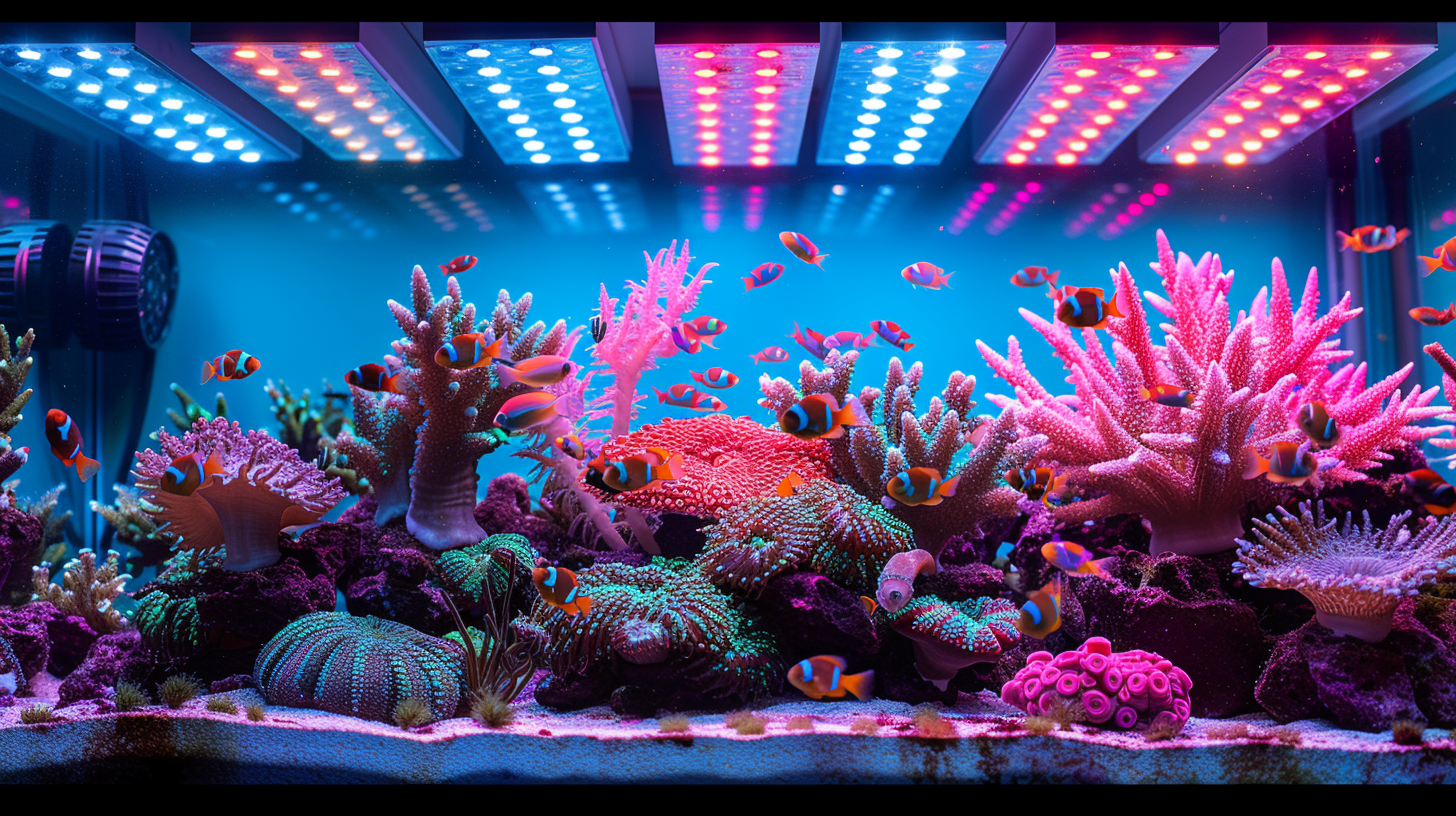
Among the various lighting options, LED fixtures have become popular due to their energy efficiency, customizable settings, and minimal heat output. They allow precise control over the photoperiod and intensity, making them ideal for tailoring the light spectrum to specific coral needs.
While metal halides and T5 fluorescents are also viable options, LEDs offer a balance of performance, cost efficiency, and environmental consideration that make them a superior choice for most reef enthusiasts.
A Practical Guide to Setting up Your Reef Tank Light Schedule
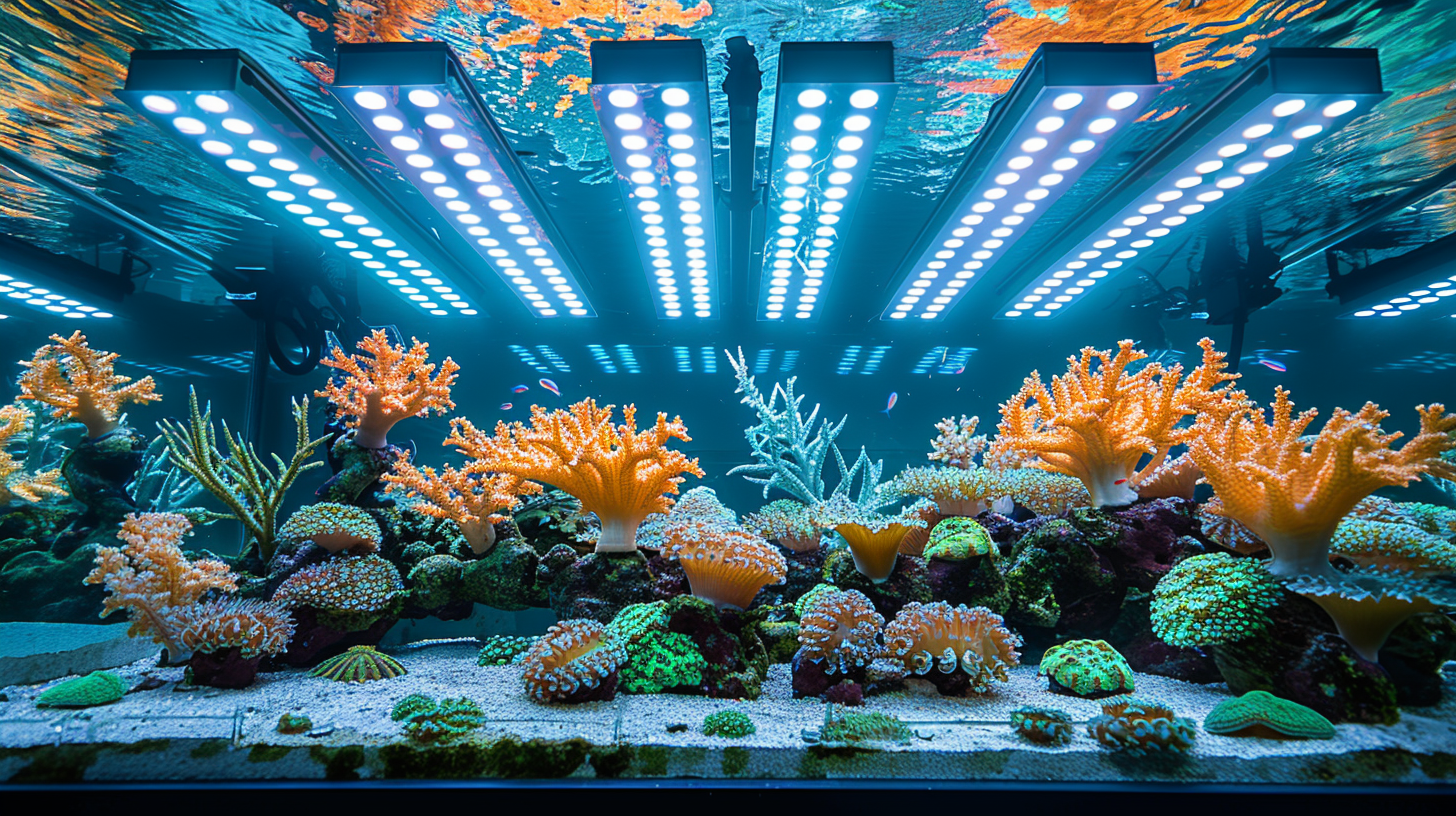
Setting up an optimal light schedule involves:
- Measuring Light Intensity: Use a PAR meter to determine the current light levels in your tank.
- Creating a Custom Schedule: Start with a 12-hour light cycle and adjust as necessary based on your coral’s specific needs and feedback.
- Using Technology: Implement programmable LEDs to automate and fine-tune light cycles, enhancing both coral health and the tank’s aesthetic.
Case Studies: Successful Light Schedules for Different Reef Tanks
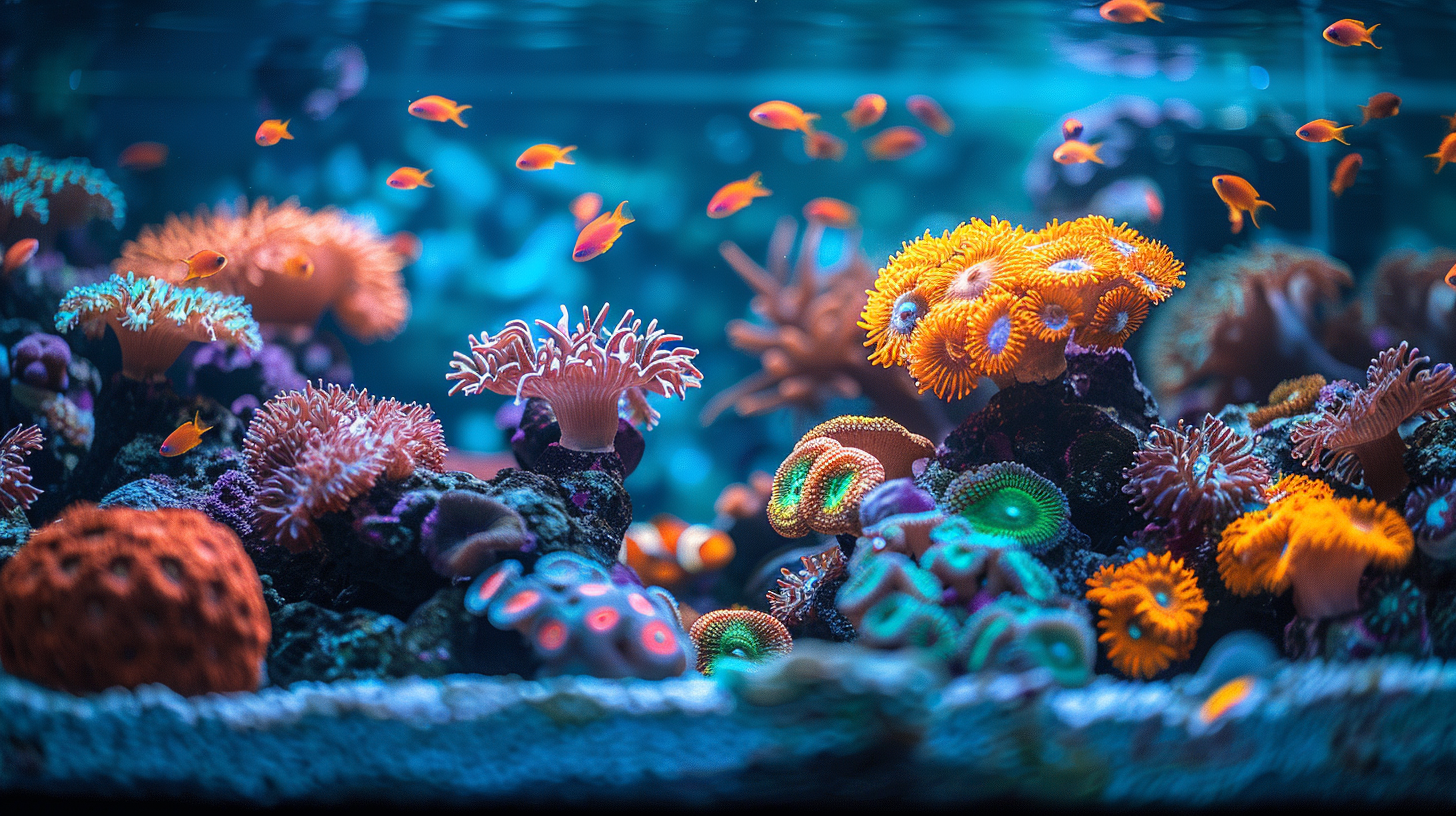
Examining real-life examples, we find that different coral types require tailored light schedules:
- High-light Corals: Implement a schedule with a midday peak in blue spectrum light for six hours to optimize growth and minimize algae.
- Low-light Corals: A gentler schedule with reduced intensity during midday can prevent stress and algae overgrowth.
- Mixed Reef Tanks: Alternating light intensities throughout the day caters to the diverse needs of various coral types within the same tank.
Conclusion
In optimizing coral growth in a reef tank, we’ve learned that a well-planned light schedule is essential. By mimicking natural sunlight patterns, gradually adjusting light intensity, and incorporating moonlight phases, we can enhance coral health and growth.
Tailoring the schedule to our specific corals and using programmable LEDs for precision makes a significant difference. Regular adjustments based on coral feedback guarantee they’re thriving, helping us create a vibrant and healthy reef tank.
Frequently Asked Questions
What is the perfect light schedule for coral growth in a reef tank?
The perfect light schedule for coral growth typically includes 8 hours of lighting, mimicking the natural lighting conditions found in the ocean. This duration is crucial for photosynthetic organisms like corals to thrive.
How should I measure the light in my reef tank?
The most common way to measure light in a reef tank is by using a PAR meter, which measures the Photosynthetically Active Radiation reaching the corals. This measurement helps ensure the light levels are sufficient for coral health.
What is the importance of spectrum in reef tank lighting?
Spectrum refers to the range of colors present in the light emitted by a fixture. Different corals require specific light spectra for optimal photosynthesis and growth. It is crucial to select a light fixture with the right spectrum to support coral health.
Why are metal halide lights recommended for reef tanks?
Metal halide lights are often recommended for reef tanks because they produce a high intensity of light, which is beneficial for corals with higher light requirements. They can penetrate deeper tanks and provide even light distribution compared to other lighting options.
How can I optimize coral growth through lighting placement?
Placing your light fixture higher above the reef tank can help distribute light more evenly and reduce shadowing. Adjusting the angle of the light fixture can also help direct light where it’s needed for different coral species.







